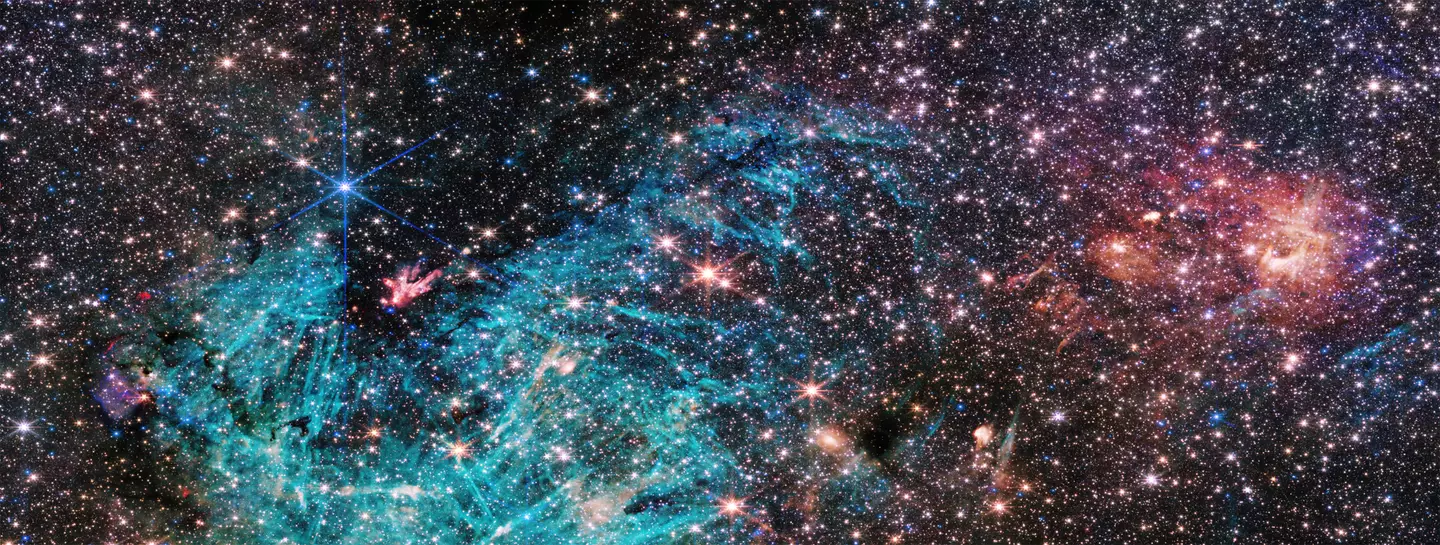
NASA's James Webb Space Telescope is one of the most powerful and technologically advanced ever built, so when it captures unique images of the far-flung corners of the universe, it rarely disappoints.
The telescope’s latest snap, which has just been released by NASA, is no exception. It shows the Sagittarius C (Sgr C) region - a dense and complex area near the center of the Milky Way galaxy - has been lauded by astronomers as a remarkable feat in space exploration.
The extraordinary picture reveals unprecedented details, including - in NASA’s own words - “never-before-seen features” that are now the subject of intense study by astronomers.

Advert
Located about 300 light-years from Sagittarius A*, the Milky Way's central supermassive black hole, the Sgr C region is a bustling area of space filled with approximately 500,000 stars.
The image taken by the Webb telescope's Near-Infrared Camera (NIRCam) offers a vivid view of this part of the galaxy, revealing a dense cluster of stars amid colorful cosmic clouds.
However, the star of the show, quite literally, is a funnel-shaped region, which is wider at the top and narrower towards the bottom. At the narrow end, a small clump of red and white appears to emit streamers upward. Surrounding the lower portion of this dark area is a large, bright cyan-colored zone with needle-like, linear structures. The right side of the image is dominated by clouds of orange and red, interspersed with a purple haze.
The image's detail and clarity is pretty groundbreaking, shedding new light on this region of the Milky Way.
Advert
Samuel Crowe, the principal investigator of the observation team and an undergraduate student at the University of Virginia, highlighted just how significant it is.
“There’s never been any infrared data on this region with the level of resolution and sensitivity we get with Webb, so we are seeing lots of features here for the first time,” Crowe said.
“Webb reveals an incredible amount of detail, allowing us to study star formation in this sort of environment in a way that wasn’t possible previously.”

Advert
The galactic center, according to Jonathan Tan, a professor at the University of Virginia and one of Crowe's advisors, is "the most extreme environment in our Milky Way galaxy", and is where current theories of star formation can be rigorously tested.
Also among the findings in the image is a cluster of protostars, which are stars in the early stages of formation. These protostars are nestled in a dense, dark cloud so thick that it obscures the light from stars, making the area appear less crowded. This region is also dotted with smaller infrared-dark clouds, indicating areas where future stars are forming.
The NIRCam instrument has also captured large-scale emissions from ionized hydrogen in the image, shown in a cyan color. The extent of this region and the chaotic orientation of the needle-like structures within it are unexpected findings that NASA thinks should be investigated further.
Rubén Fedriani, a co-investigator of the project at the Instituto Astrofísica de Andalucía in Spain, described the galactic center as a "crowded, tumultuous place", where the interactions of magnetized gas clouds, forming stars, and their outflows have an impact on the surrounding environment.
Advert
“Webb has provided us with a ton of data on this extreme environment, and we are just starting to dig into it,” Fedriani said.
While the image from the Webb telescope offers a visually stunning view of our galaxy's core, it also provides critical data for understanding how stars in our galaxy formed as well as the ins and outs of the galactic center.
“The image from Webb is stunning, and the science we will get from it is even better,” added Crowe. “Massive stars are factories that produce heavy elements in their nuclear cores, so understanding them better is like learning the origin story of much of the universe.”